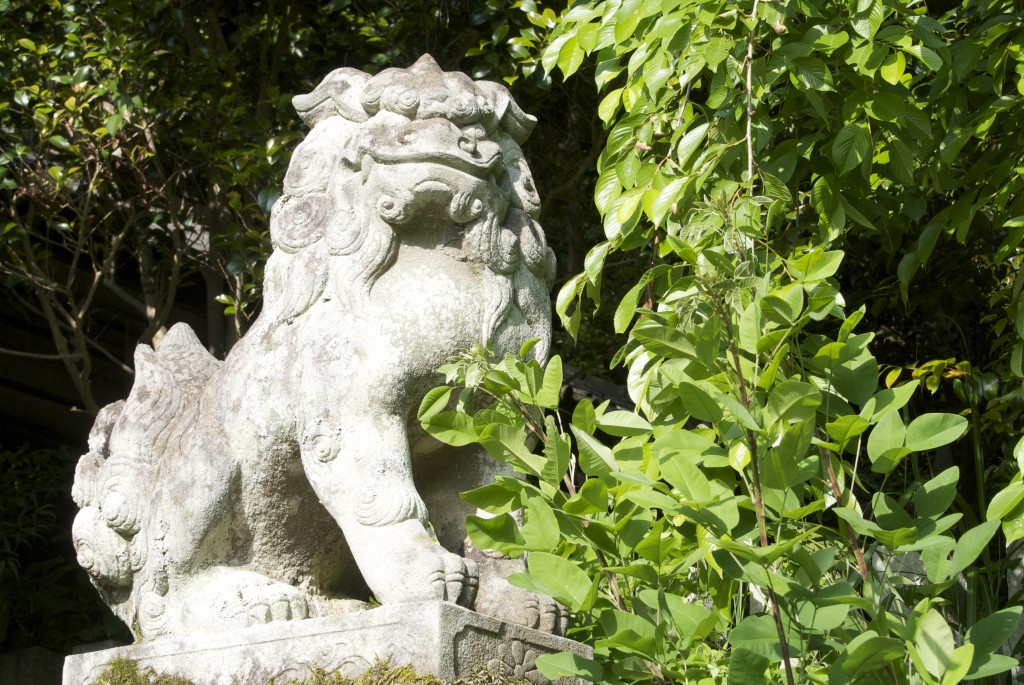
One of the magnificent komainu guarding the approach to the shrine
The power animals of shamanism evolved in Shinto into messengers of the kami, able to mediate between the human world and the spiritual. Statues of animals are thus often found at shrines. The kitsune foxes at Inari shrines are well-known. At Hachiman shrines you find dove guardians, at Benten shrines there is inevitably a white snake somewhere, and there’s always an ox statue at Tenmangu shrines. Amaterasu is served by roosters, since they announce her coming at the break of each day.
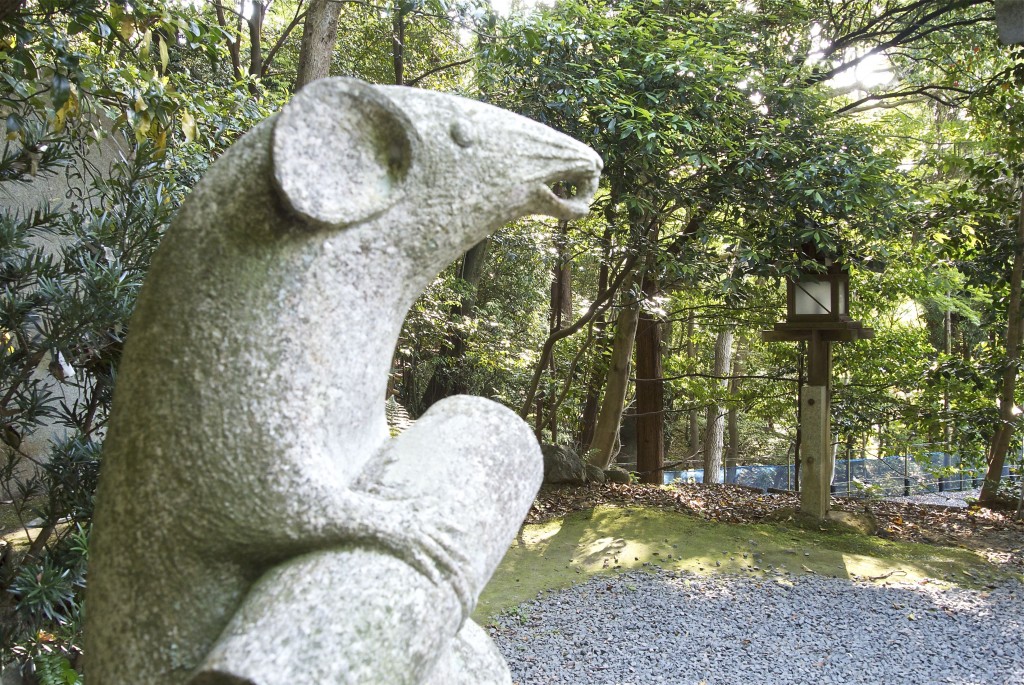
Rat guardian with his scroll bearing wisdom from the gods
Otoyo Shrine has the richest collection of animal statuary I’ve come across. Though it’s only a small shrine, on the approach there are no fewer than three sets of komainu to guard the shrine and ensure evil spirits don’t enter. Three is of course a favourite number in many spiritual traditions, including shamanism, and it just so happens that the shrine honours three different kami (see Part 1).
Around the main Worship Hall are clustered four smaller subshrines, and each has animal guardians. At the Okuninushi Shrine is Otoyo’s prized item, a pair of guardian rats (described in Part 1). Here is the legend that goes with them…
According to the Kojiki (712), Okuninushi travelled to another world where he met Princess Suseri, daughter of Susanoo. They fell in love with each other at first sight. Then Susanoo set Okuninushi a challenge to test his fortitude by ordering him to sleep in a room filled with snakes, but Princess Suseri gave Okuninushi a snake scarf, said to be one of ten ancient treasures. The scarf helped him to sleep safely in the room. Susanoo then imposed another ordeal on Okuninushi by shooting off an arrow and asking him to go and retrieve it. As Okuninushi was searching for it, Susanoo set fire to the surrounding plain and the flames spread quickly threatening Okuninushi’s life. Suddenly a rat appeared and told him that there was a hole in the ground. While he was hiding in the hole, the fire passed overhead. Then, the rat retrieved the arrow and gave it to him. As a result, Okuninushi passed the challenge Susanoo had set for him and he was able to marry Princess Suseri.
Next to the rat shrine is the Inari Shrine with a fine pair of long-necked fox guardians and a white fox carved into the decorative fringe. (White is a symbol of purity, as it is in Siberian shamanic cultures.) On the other side of the Worship Hall is a snake, recently added to the grounds. Beyond it are two shrines for Kyoto’s twin mountains, Mt Atago in the west (the slightly taller of the two) and Mt Hiei in the east. One is guarded by a kite, or hawk (tonbi), very much a shamanic creature (as in the Steve Miller song, Fly like an eagle). The other is guarded by a monkey, guardian of the Hiei kami, Sanno, recognised by Saicho back in the early ninth century.
The shrine owners are obviously fond of their animal statuary as they have sought to add to it in various ways. There is a conspicuous tanuki statue in the greenery, and there are other animal figures displayed at various places, not always in the best of taste one might add. Furthermore, the shrine uses its rat guardian as a publicity vehicle with a sign facing onto the Philosopher’s Walk on which it features as an attraction, with the shrine taking the opportunity to advertise services for such ceremonies as the ‘jichinsai’ ground-breaking ritual. Curiously though, I didn’t notice pet blessings among the services offered…
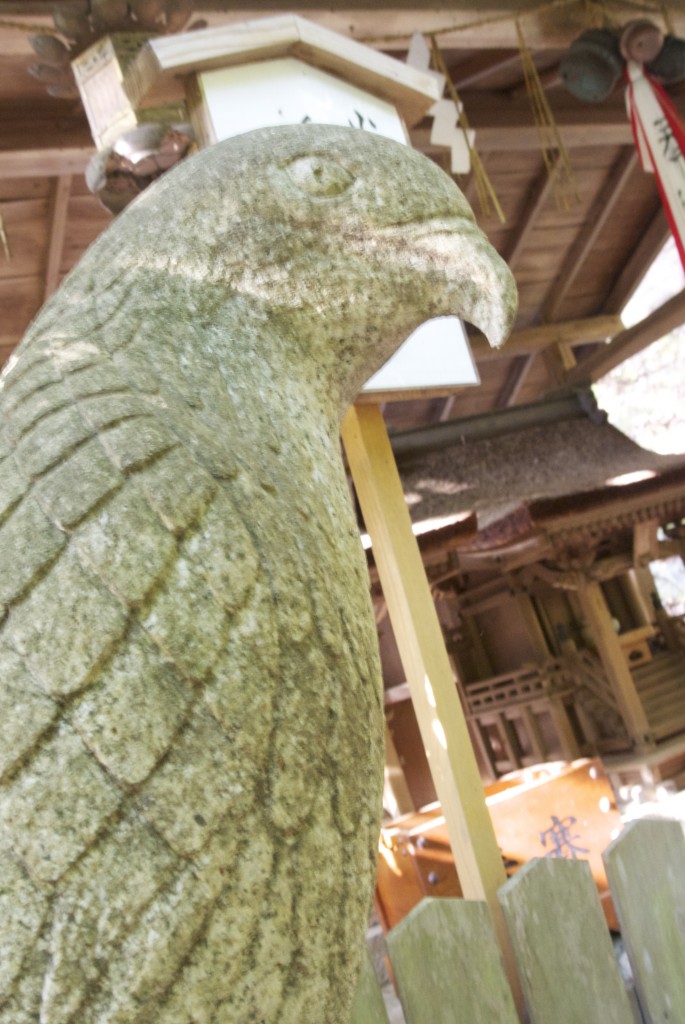
The Atago guardian of the west facing....
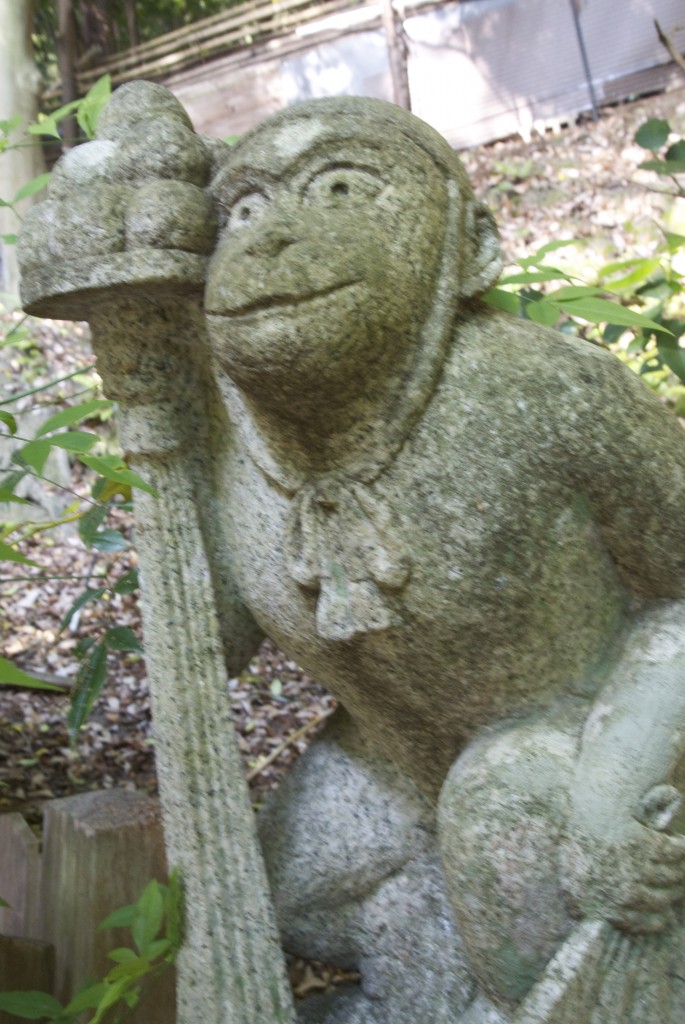
... the monkey guardian of the east
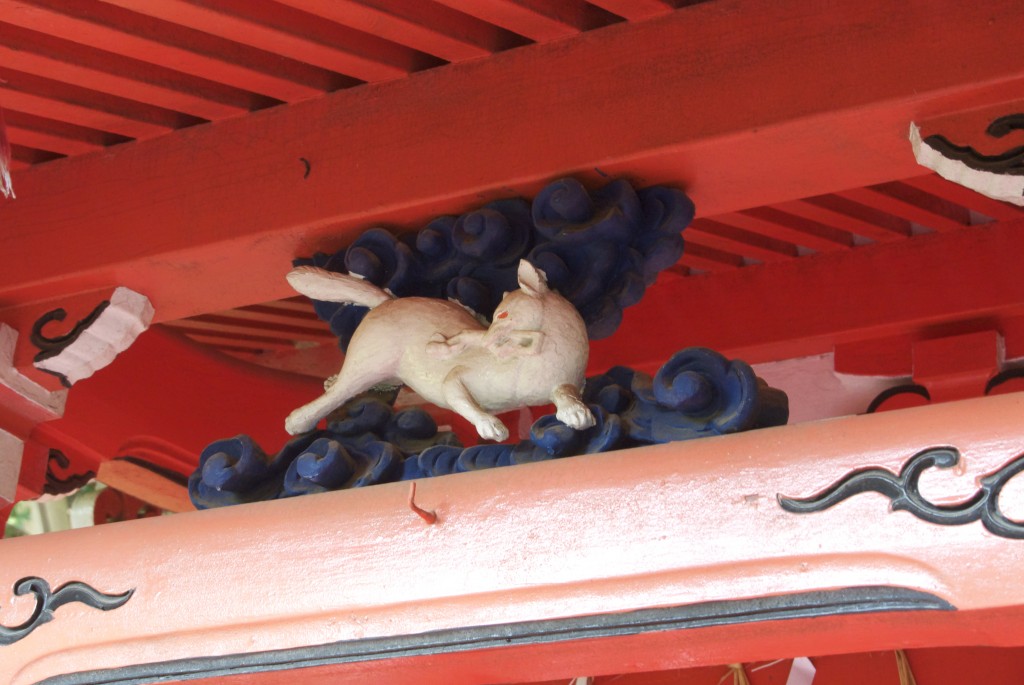
White fox bearing a scroll on the Inari subshrine
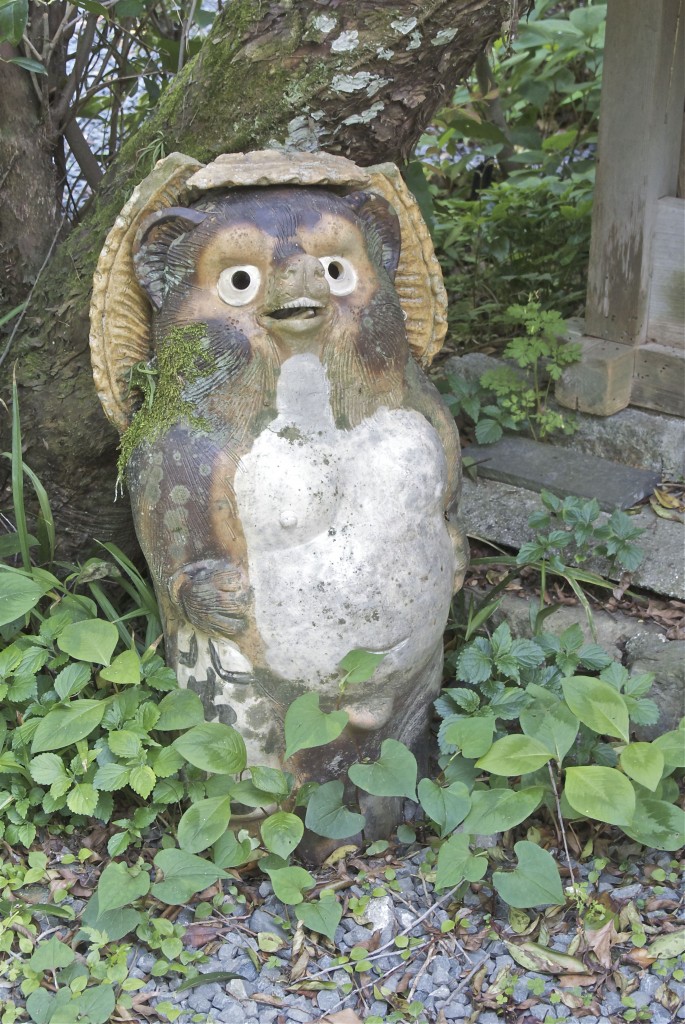
A tanuki has sneaked into the shrine grounds
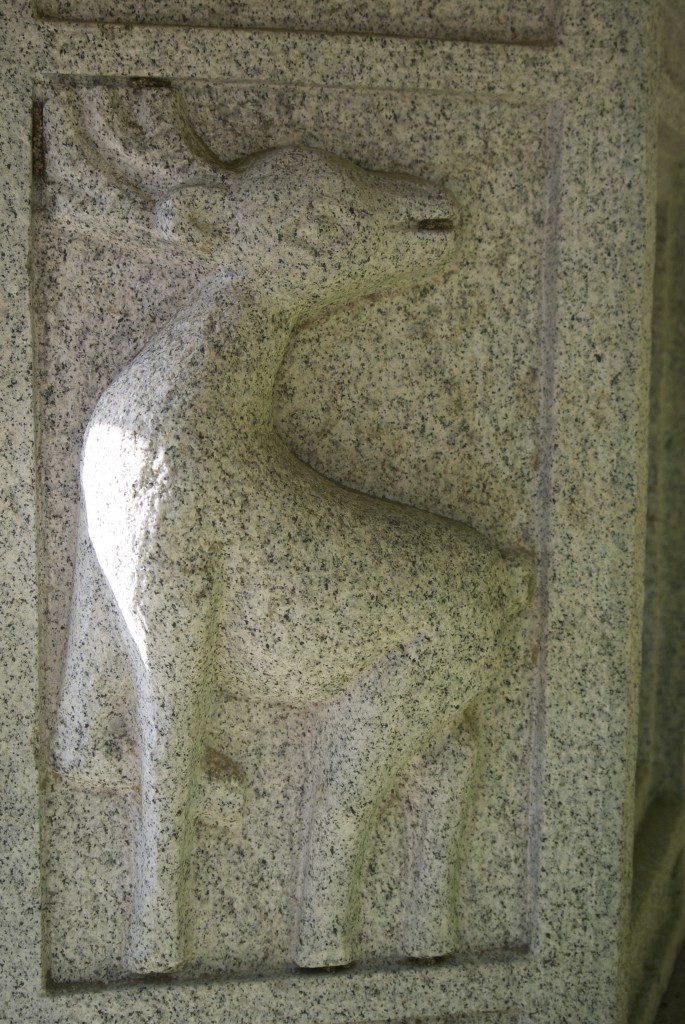
... and on a stone lantern is a deer, which in shamanic style once bore the Kasuga kami to Nara
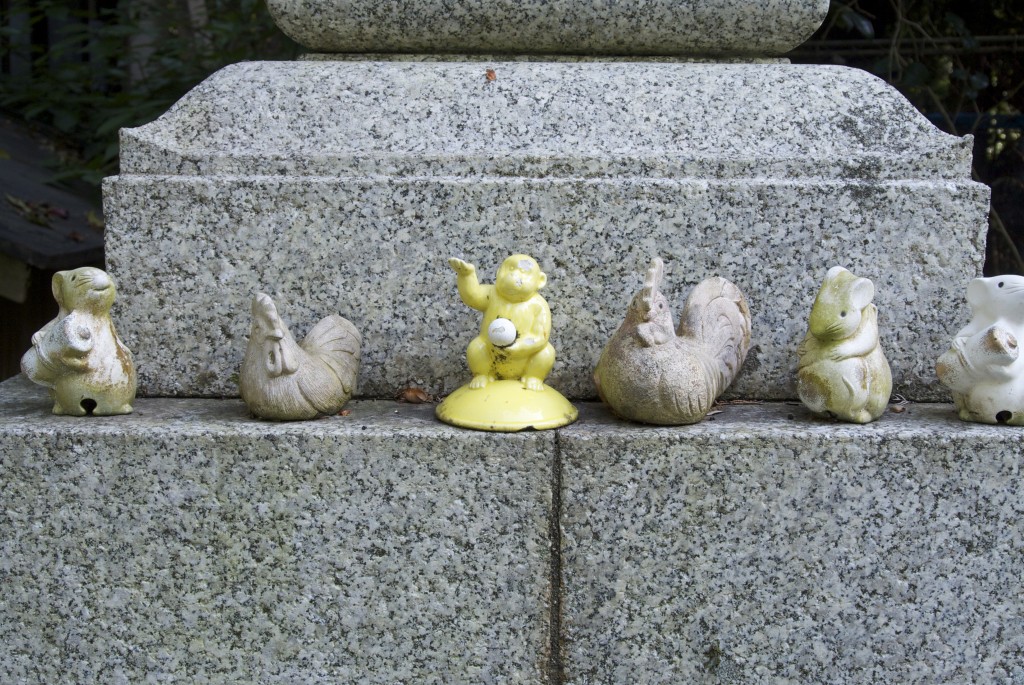
Rats, roosters and monkeys - familiar Shinto animals, but hardly in traditional form

Leave a Reply